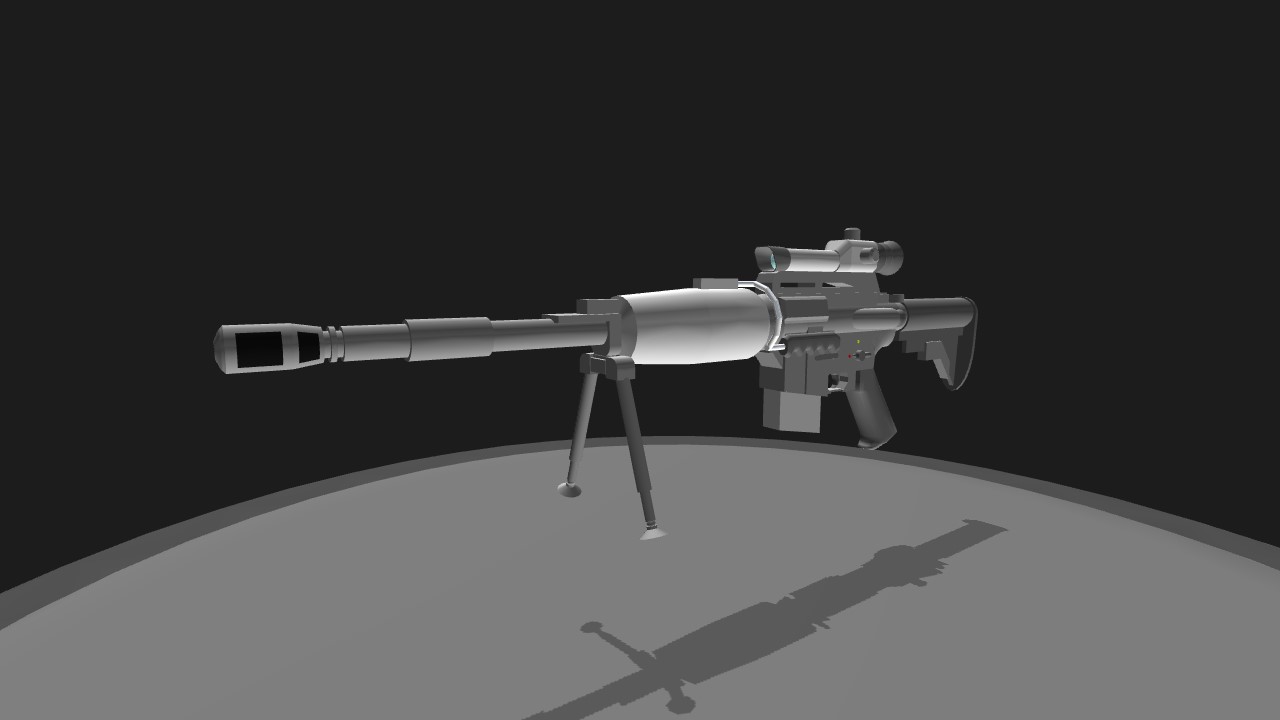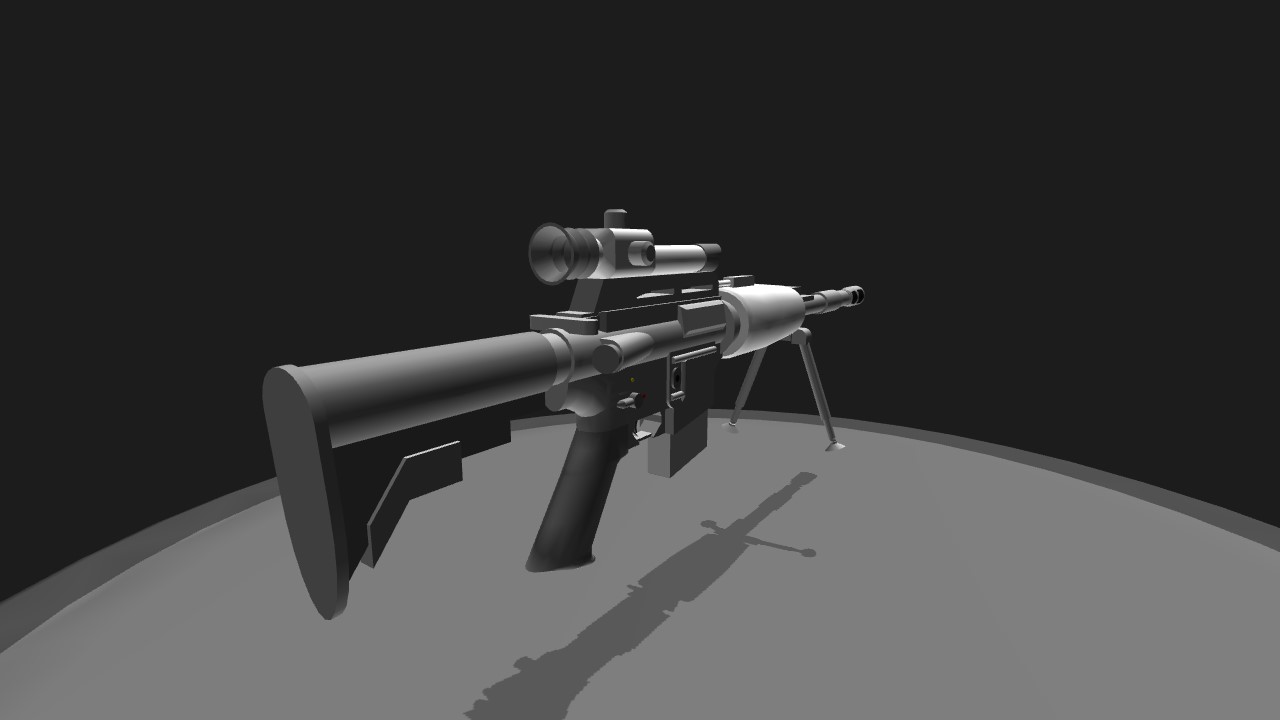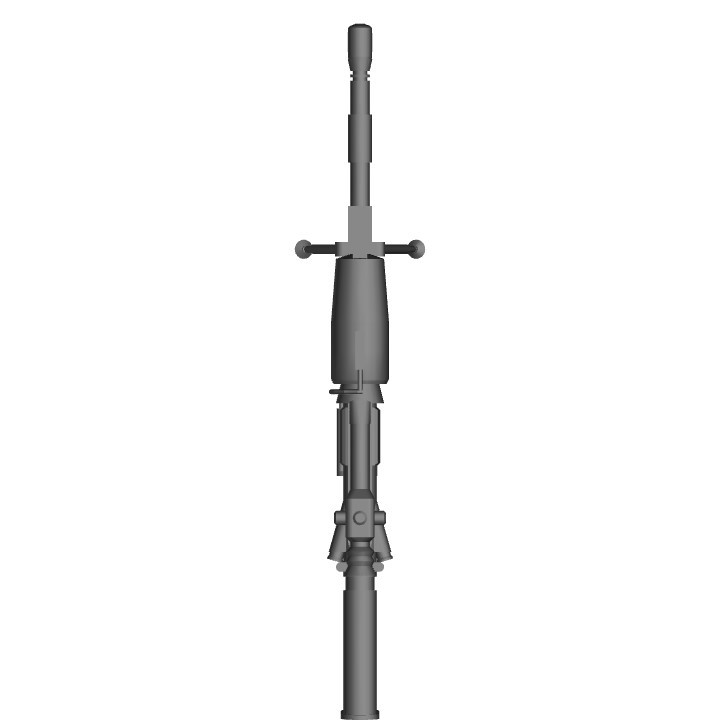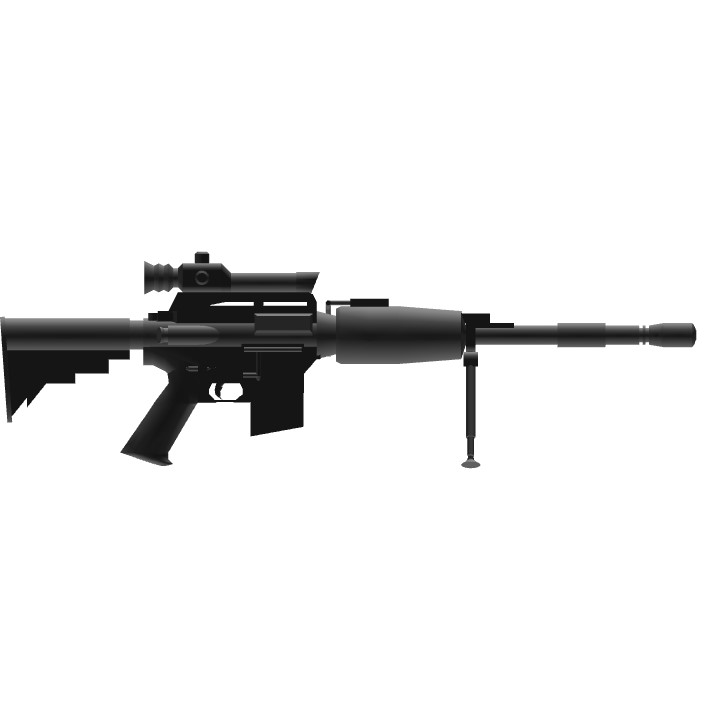Lore (Not real world project):
In the 1980s, Defense Advanced Research Projects Agency (DARPA) was interested in experimenting with electromagnetic technologies, especially electromagnetic launchers. They had concepts of electromagnetic launchers in the form of aircraft catapult, SSTO catapult, and even projectile electromagnetic launcher; more commonly known as railgun. Turns out, the one that really had potential was the railgun, among other concepts. They went ahead to the board and designed a railgun that launches 155mm projectiles. The test resulted as a success in 1994. Then after the success of it, they had an idea of making a miniaturized version to be portable. It started in 1995 as the 'Portable Electromagnetic Launcher', or shortened as 'PEL'. They designed a cumbersome but functional prototype. It fired a small dart/flechette, at only 5.1mm in diameter. It's proven that it's a little too unstable. They decided to make the flechette smaller but longer. the projectile is finalized in 2003 as 4.65x50mm sabot. Now that the projectile is done, they start making concepts about how the railgun would look like. Many are cumbersome but sturdy, and some other are compact but fragile. Seeing that it can be really compact, they took the AR-15 as the platform for the portable railgun. The project developed into 'Assault-Electromagnetic Launcher', shortened as 'AEML'. The tests of the AEML went on for 13 years, from 2006 to 2019. In those years, the Air Force has interests in the project and they demand that once it's done, they want 100 railguns ready for troop trials. In 2019, the design was finalized and given the name 'AEML-19'. It has an optical scope that has adjustable magnification power of 2.5x - 40x. It also has 4 fire-selector: safe, semi-automatic, 3-rounds burst, and fully-automatic. The rate of fire can be adjusted from 300 rounds per minute all the way up to 2000 rounds per minute. The muzzle velocity in maximum output is 6.475 km/s, or 18.8 times the speed of sound. It can be lowered down to only 1 km/s for power conservation. It has a battery and capacitor that allows the weapon to be shot 200 times (8x standard 25 rounds magazine) before needing to be recharged. Later in 2020, the 100 railguns were sent to the Air Force for troop trials, some to Aberdeen for further testing. Soldiers liked it, as it's accurate and the projectile speed means they don't have to lead or calculate distance to target as much as traditional rifles. However, the concussion when firing was like firing a .50 caliber rifle, and the full auto capability was deemed almost useless. Nonetheless, the full auto was still kept in all the railguns even through adoption by the Air Force with the designation 'Gun, Unit-14/P', or shortened as 'GUU-14/P'. They also had one as weapon for pilots to use, which was designated as 'Gun, Automatic, Unit-14A/A' (not to be confused with 'Gun, Aircraft, Component-14/A' or 'GAK-14/A').
Controls:
- Throttle to control gun lateral axis (Elevation).
- Roll to control gun longitudinal axis (Roll axis).
- VTOL to raise/lower the bipod.
- Trim to rotate the bipod in vertical axis.
- Landing Gear to retract bipod.
- Ground targeting - Fire weapons to fire gun. 25 rounds of ammunition.
Issues:
- Bipod is awfully wobbly.
- No reload.
- No sight crosshair.
- Details are not great, many details are simplified.
- Save file is mistakenly named 'GAU-14/A' instead of 'GUU-14/P'.
- Size is not 1:1, neither the mass.






that one fortnite kid : i am aboud to 360 no scope those noob planes
@OPaiTaOn i think thats an m4 lmao
I like your AK 47